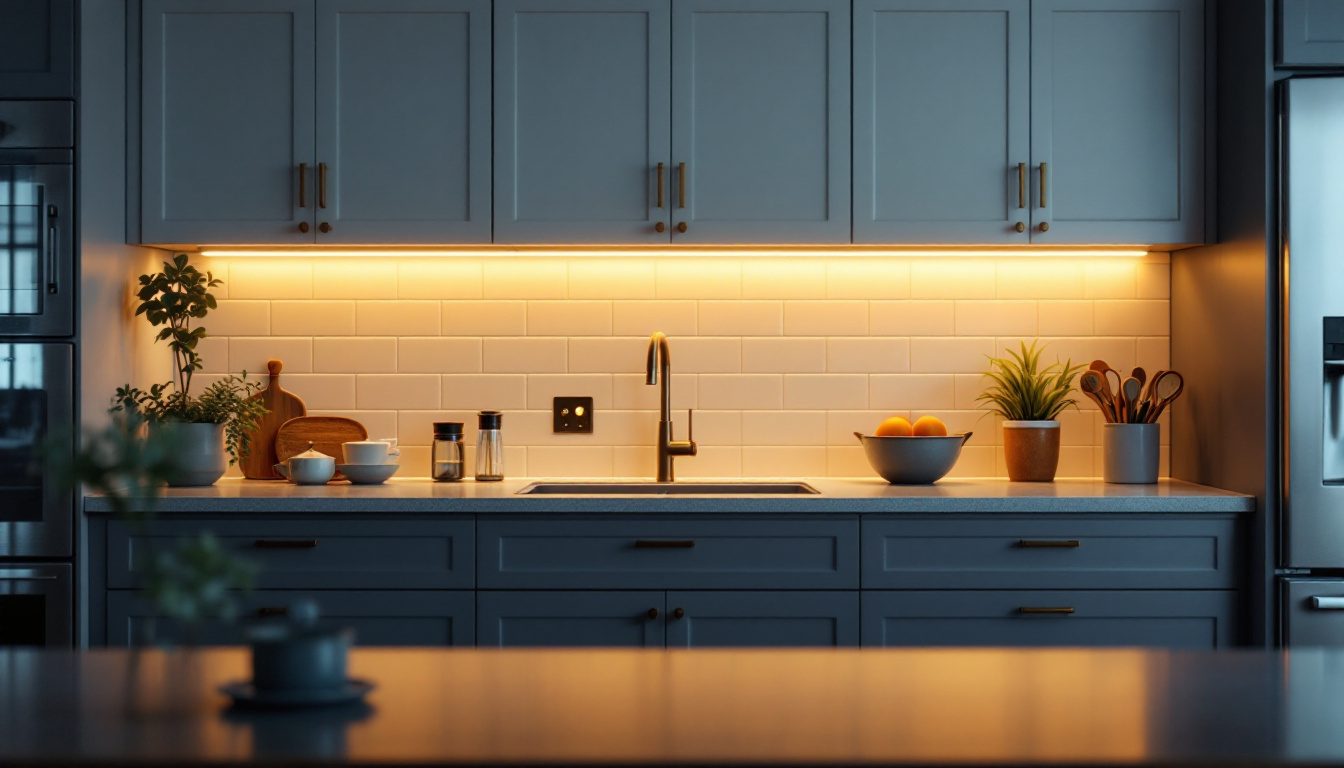
In the ever-evolving world of lighting design, staying ahead of the curve is crucial for contractors. One of the most fundamental aspects of any lighting project is the choice of bulb base size. Understanding standard bulb base sizes not only ensures compatibility but also plays a significant role in future-proofing lighting installations. This article delves into the various bulb base sizes, their applications, and how to make informed decisions to secure the longevity and adaptability of lighting projects.
Bulb base sizes refer to the specific dimensions and types of fittings that allow light bulbs to connect to their fixtures. These sizes are standardized to ensure compatibility across different manufacturers and products. Familiarity with these sizes is essential for contractors to provide seamless installations and replacements.
There are several common bulb base types that contractors should be familiar with. Among the most prevalent are the Edison screw bases, which include E26 and E27 sizes, and the bi-pin bases, such as GU10 and G4. Each type serves distinct purposes and is designed for various applications, from residential to commercial settings.
The E26 base, for example, is widely used in North America for standard household lighting, whereas the E27 base is more common in Europe. Understanding these differences can help contractors select the right bulbs for their projects and avoid compatibility issues down the line. Additionally, there are specialty bases like the R7s, often used in linear halogen bulbs, which are favored for their high lumen output and compact design, making them ideal for accent and flood lighting in both indoor and outdoor environments.
The choice of bulb base size is not merely a technical detail; it significantly impacts the overall design and functionality of a lighting project. A well-chosen base size can enhance the aesthetic appeal of a space while ensuring optimal performance. For instance, using a larger base size can accommodate higher wattage bulbs, providing brighter illumination for commercial environments.
Moreover, as energy-efficient lighting solutions become more prevalent, understanding base sizes will help contractors transition to LED and other modern technologies without compromising design or functionality. This adaptability is crucial in an industry that is constantly evolving. Furthermore, the rise of smart lighting systems has introduced new base types and configurations, which can be integrated into existing designs to allow for greater control and customization of lighting schemes. This evolution not only enhances user experience but also encourages energy conservation, making it essential for contractors to stay updated on the latest trends and technologies in bulb base sizes.
Future-proofing lighting projects involves anticipating changes in technology, consumer preferences, and regulatory standards. One effective strategy is to prioritize standardization in bulb base sizes. By selecting widely accepted sizes, contractors can ensure that their installations remain relevant and compatible with future lighting innovations.
Standardization offers several benefits that can enhance the efficiency and effectiveness of lighting projects. First and foremost, it simplifies the procurement process. When contractors use standard bulb base sizes, they can easily source replacements and upgrades from a variety of manufacturers, reducing lead times and costs.
Additionally, standardization promotes interoperability. As new lighting technologies emerge, having a consistent base size allows for easier integration of innovative solutions. This adaptability is particularly important in commercial settings, where lighting needs may change rapidly based on trends or business requirements. Furthermore, standardization can lead to improved energy efficiency, as manufacturers are more likely to invest in developing cutting-edge, energy-saving technologies for widely used base sizes, ensuring that contractors and consumers alike benefit from the latest advancements.
When selecting bulb base sizes for specific applications, contractors should consider the unique requirements of each project. For residential settings, the E26 base is often the go-to choice due to its widespread availability and compatibility with various fixtures. However, in commercial environments, where higher light output is essential, opting for larger bases like E39 may be more appropriate.
In addition, understanding the specific lighting needs of different spaces—such as task lighting in kitchens or ambient lighting in living areas—can guide contractors in making informed decisions about base sizes. This knowledge not only enhances the functionality of the lighting but also contributes to the overall satisfaction of clients. Moreover, it is crucial to stay informed about emerging trends in lighting design, such as the increasing popularity of smart lighting systems, which often rely on standardized bases to ensure seamless integration with home automation systems. By keeping abreast of these developments, contractors can better advise their clients and position themselves as industry leaders in an ever-evolving market.
The lighting industry is witnessing a rapid shift towards smart technologies and energy-efficient solutions. As these innovations become more mainstream, contractors must adapt their projects to accommodate new bulb types and base sizes. This adaptability is key to ensuring that installations remain relevant and effective in the long term.
Smart lighting solutions often come with unique bulb base sizes that may differ from traditional options. For instance, many smart bulbs utilize the E26 or E27 bases but may also feature proprietary designs that require specific fixtures. Contractors should stay informed about the latest smart lighting products and their compatibility with existing systems.
Incorporating smart lighting into projects not only enhances functionality but also appeals to tech-savvy clients looking for modern solutions. By understanding the nuances of smart bulb base sizes, contractors can position themselves as knowledgeable professionals in a competitive market. Furthermore, the integration of smart lighting systems can lead to advanced features such as remote control via smartphones, voice activation through smart home devices, and programmable lighting schedules that adjust according to user preferences. These capabilities not only improve convenience but also promote energy savings by allowing users to control their lighting more efficiently.
As energy efficiency becomes a priority for both consumers and regulatory bodies, contractors must consider the implications of bulb base sizes on sustainability. LED bulbs, which are known for their energy-saving capabilities, often come in standard base sizes, making them easy to integrate into existing fixtures.
By promoting the use of energy-efficient bulbs, contractors can not only reduce their clients’ energy costs but also contribute to a more sustainable future. Selecting the right base sizes for LED bulbs ensures that projects remain compliant with energy regulations and meet the growing demand for eco-friendly solutions. Additionally, the shift towards energy-efficient lighting is supported by various incentives and rebates offered by governments and utility companies, which can further motivate clients to upgrade their systems. As awareness of environmental issues continues to rise, contractors who prioritize sustainability in their projects will likely find themselves at the forefront of a market that increasingly values green technology and practices.
Proper installation and maintenance are critical components of successful lighting projects. Understanding bulb base sizes can streamline both processes, ensuring that installations are efficient and that maintenance tasks are manageable over time.
When installing bulbs, it is essential to follow best practices to ensure safety and functionality. Contractors should always verify that the bulb base size matches the fixture specifications to avoid compatibility issues. Additionally, using the correct wattage for the chosen base size is crucial to prevent overheating and potential hazards.
Moreover, providing clients with clear instructions on how to replace bulbs can enhance their experience and satisfaction. Educating clients about the importance of using the correct base size for replacements can prevent future complications and ensure the longevity of the lighting system. It can also be beneficial to demonstrate the installation process during a walkthrough, allowing clients to feel more confident in managing their lighting systems independently.
Regular maintenance is vital to the performance of lighting systems. Contractors should establish a maintenance schedule that includes checking the condition of bulbs and fixtures. When it comes to replacements, having a stock of standard bulb base sizes can expedite the process and minimize downtime for clients.
Furthermore, advising clients on the lifespan of different bulb types can help them plan for future replacements. For instance, while LED bulbs have a longer lifespan compared to incandescent bulbs, understanding the specific base sizes and their compatibility with fixtures will ensure a smooth transition during replacements. Additionally, incorporating smart lighting solutions can enhance maintenance strategies; many smart bulbs come with features that alert users when a bulb is nearing the end of its life, allowing for proactive replacements and reducing the risk of unexpected outages.
In addition to these strategies, implementing a tracking system for bulb usage and replacements can provide valuable insights into the performance of the lighting system. By monitoring which bulbs are used most frequently and their replacement frequency, contractors can make informed recommendations for future installations, potentially suggesting more efficient lighting options that align with the client’s needs and preferences. This data-driven approach not only improves the overall efficiency of the lighting system but also fosters a stronger relationship between contractors and clients, as it demonstrates a commitment to ongoing support and optimization.
In the dynamic field of lighting design, understanding standard bulb base sizes is essential for contractors aiming to future-proof their projects. By prioritizing standardization, adapting to emerging technologies, and considering installation and maintenance best practices, contractors can create lighting solutions that are not only functional but also sustainable and adaptable to change.
As the industry continues to evolve, staying informed about bulb base sizes and their implications will empower contractors to make strategic decisions that benefit both their clients and their businesses. Embracing these principles will ensure that lighting projects remain relevant, efficient, and capable of meeting the demands of an ever-changing market.
Ready to elevate your lighting projects to the next level? At LumenWholesale, we provide contractors with the highest quality, spec-grade lighting products at prices that can’t be beaten. Say goodbye to local distributor markups and hello to our extensive selection that meets rigorous industry standards. With free shipping on bulk orders, you can ensure your projects are future-proofed with reliable, high-performance lighting—without any hidden fees. Don’t compromise on quality or value; choose LumenWholesale for the perfect blend of affordability and convenience. Wholesale Lighting at the Best Value is just a click away.

Discover the essentials of shunted vs. non-shunted sockets in lighting systems with our comprehensive guide tailored for lighting contractors.

Discover the must-have tools for lighting contractors specializing in recessed mounted installations.

Discover effective strategies for training your team in selecting and installing under-cabinet lighting.

Discover the essential guide for lighting contractors on selecting the perfect three-way light switches.